How to water ficus in winter?
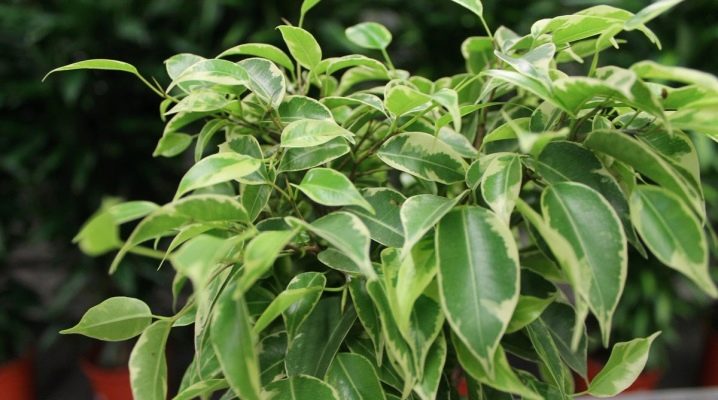
Despite the fact that in winter many indoor plants stop actively developing, they still need daily care: lighting, spraying, feeding, watering. What determines the frequency of procedures and how to carry them out correctly? In the article, we'll talk about how to water a ficus in winter.
Each plant has its own approach
There are a lot of domestic representatives of the Mulberry family, they differ greatly from each other in size, types of foliage and root system, deciduousness and growing conditions. If there is a 100-liter tub with a banyan tree in the house or office, then watering it will take much more time and effort. But the plant can be ampelous, climbing. Such a flower is usually small, but has a year-round cycle.

Ficus, from which bonsai is grown at home, is a deciduous species. Figs are also deciduous, some varieties of which yield crops when grown at home. In addition, some types of ficuses like different levels of moisture, which can be maintained in different ways.
The amount of light will affect the brightness of the foliage, the rate at which the soil dries, and the frequency of watering.
With a low temperature in the house, plants will develop at a slower pace and require less moisture. In a hot room, things will be different.
Eventually:
- tree-like ficuses under normal conditions need watering about 1 time a week, when the top layer dries up, the critical moment does not come, since the root system goes deep into the pot;
- ampel plants need a lot of water, since the green crown is large, and the pots for climbing and crawling are used small, very often in the form of pots, and the roots are located superficially, so any lack of moisture will immediately manifest itself by wilting of the leaves;
- most bonsai varieties are bottled, which store water by storing it in caudex, this will save them in the absence of watering.
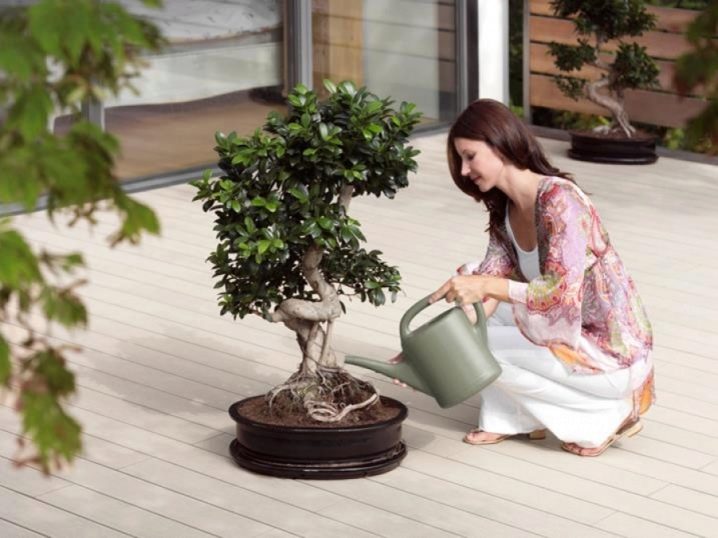
Watering methods
It is possible to determine whether it is time to water the plant by the moisture content of the soil in the pot: 1.5-3 cm of the top dry soil indicates that it is time to water the ficus. This can be done in several ways:
- superficial, when water is poured directly onto the earthen lump, in this case it is important to drain the water from the sump in time, since stagnant moisture can lead to the formation of fungus and midges;
- immersion: the plant is transferred to a bath or large basin and carefully shed, and after the soil has been saturated with water, the flower is returned to its place;
- wiping the leaves with a damp sponge or napkin in large-leaf specimens;
- shower for small and medium flowers about once a month;
- spraying: all ficuses love, in hot weather it is recommended to spray plants daily, especially variegated and fine-leaved plants.
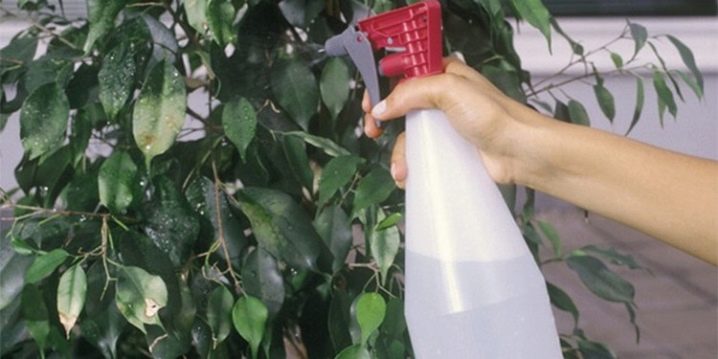
What water to water?
It is definitely not recommended to use chlorinated tap water. The water is settled for 2-3 days or filtered. It is believed that there is no need to water the plants with boiled water, since it is "dead" and does not contain any useful substances. But with the help of boiling, they reduce the level of water hardness.
If you do not want to use boiled water, then you can use the freeze-defrost method, when during defrosting, an ice rod is removed, which thaws last.
You can use melted snow for watering. But this applies, of course, for pure snow, which is difficult to find in urban environments.Many people use aquarium water when replacing it, as it contains a lot of organic matter that is so necessary for plants. The water temperature during irrigation should be at room temperature, which means that by dipping your finger into the water, you should not feel a sharp change in temperature. But this is if the room temperature is 25-30 degrees.

How to water in winter?
In the fall, the plant begins to prepare for the dormant period. From October, the plants are watered less frequently. With the onset of winter, you need to clearly monitor the air temperature:
- if in the room where the flower grows, the temperature does not rise above 15-16 degrees, then the ficus is shed 1 time in 10 days;
- 20-23 degrees indoors will lead to the need for watering once a week;
- above 23 degrees, they will make the plant more moistened: watering is needed in 2-3 days and daily spraying.
In winter, the plants lack moisture. To create it, you can put a plastic bag on the crown of a small flower, after sprinkling it with water. If your home has a humidifier, turn it on next to the plant. Recently, many people have been buying mini-fountains at home. This is also a good air humidifier that can be placed next to the ficus tree. And the simplest options for humidification are to pour water into a flower tray or simply put a container of water that will gradually evaporate and supply the plant with moisture.

How to tell if watering is correct?
With improper watering, the plant acquires reversible or irreversible consequences:
- with too little watering, the leaves become pale, soft, turn yellow and gradually begin to fall off;
- with an excess of moisture, the foliage quickly turns yellow without drying and rapidly falls off 20-30 pieces per day;
- also, the plant, escaping, will begin to shed its foliage if it is cold: either from the fact that it is standing on a cold floor or windowsill, or from the fact that it is watered with cold water;
- half an hour after watering, there should be no water in the pot, overflowing the ficus will lead to rotting of the root system.
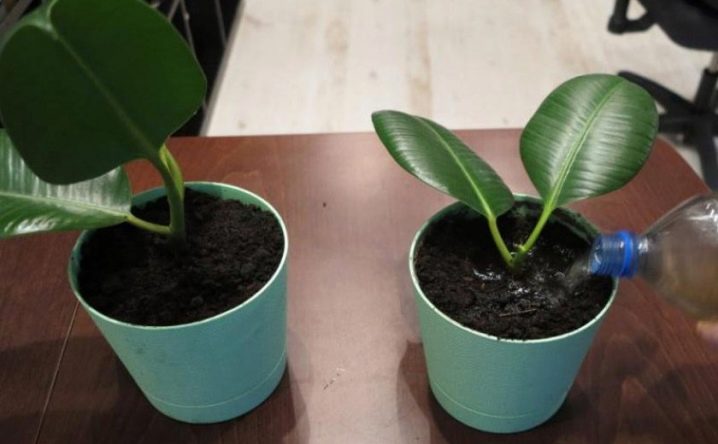
With proper watering, the plant has a rich bright color of foliage, if it does not shed it for the winter.
Most ficuses have shiny trunks, and bottle caudex is dense. In winter, the plants are not transplanted, but if, as a result of improper watering, the flower is sick, then it is better to transplant it into a new pot and new soil, thoroughly washing the roots. You can even do this with a mild manganese solution to avoid fungal infections.
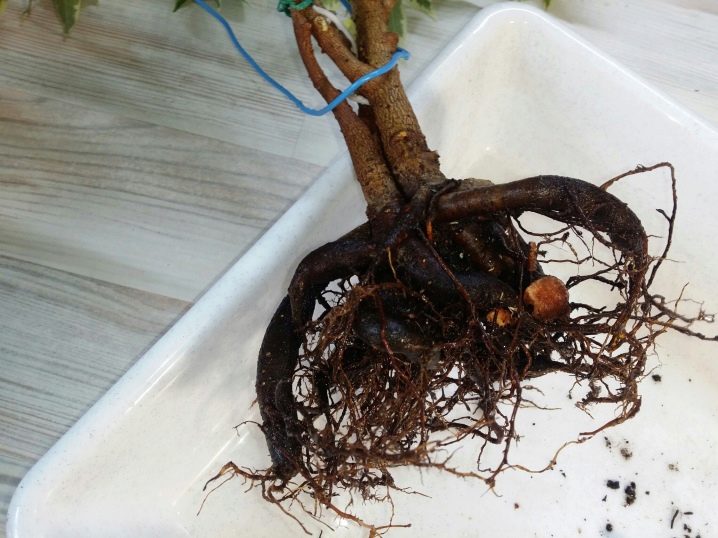
Top dressing of ficus in winter
From spring to autumn, half of the ficus species need feeding. In winter, it is not recommended to do it, since the active concentrated organic matter of industrial production will start the growth of plants. And in conditions of a lack of heat and light, the stems will become thinner, elongated. If you feel that the plant still lacks nutrients, then preventive feeding can be done from improvised means.

For this, the following are suitable:
- finely chopped vegetable and fruit peels for large pots, flowerpots and tubs;
- 40 grams of sugar per liter of warm water, you can simply sprinkle sugar on the soil once a month;
- the coffee grounds are dried and drained with the top layer of the earth, while leaving the wet grounds on the surface is not worth it - this leads to the formation of midges;
- they do the same with waste tea leaves, but you can sometimes water the flower with just tea;
- 50 g of onion husks are boiled for 15 minutes. with 2 liters of water, insist for 2-3 hours and filter, this agent is watered and sprayed with ficuses from midges and to improve the quality of the soil;
- villagers know the value of wood ash: 1 tablespoon per liter of boiling water is infused for a week with daily stirring, and dry dusting of the ground with ash powder is also effective.

For information on how to care for Benjamin's ficus in winter, see the next video.































The comment was sent successfully.